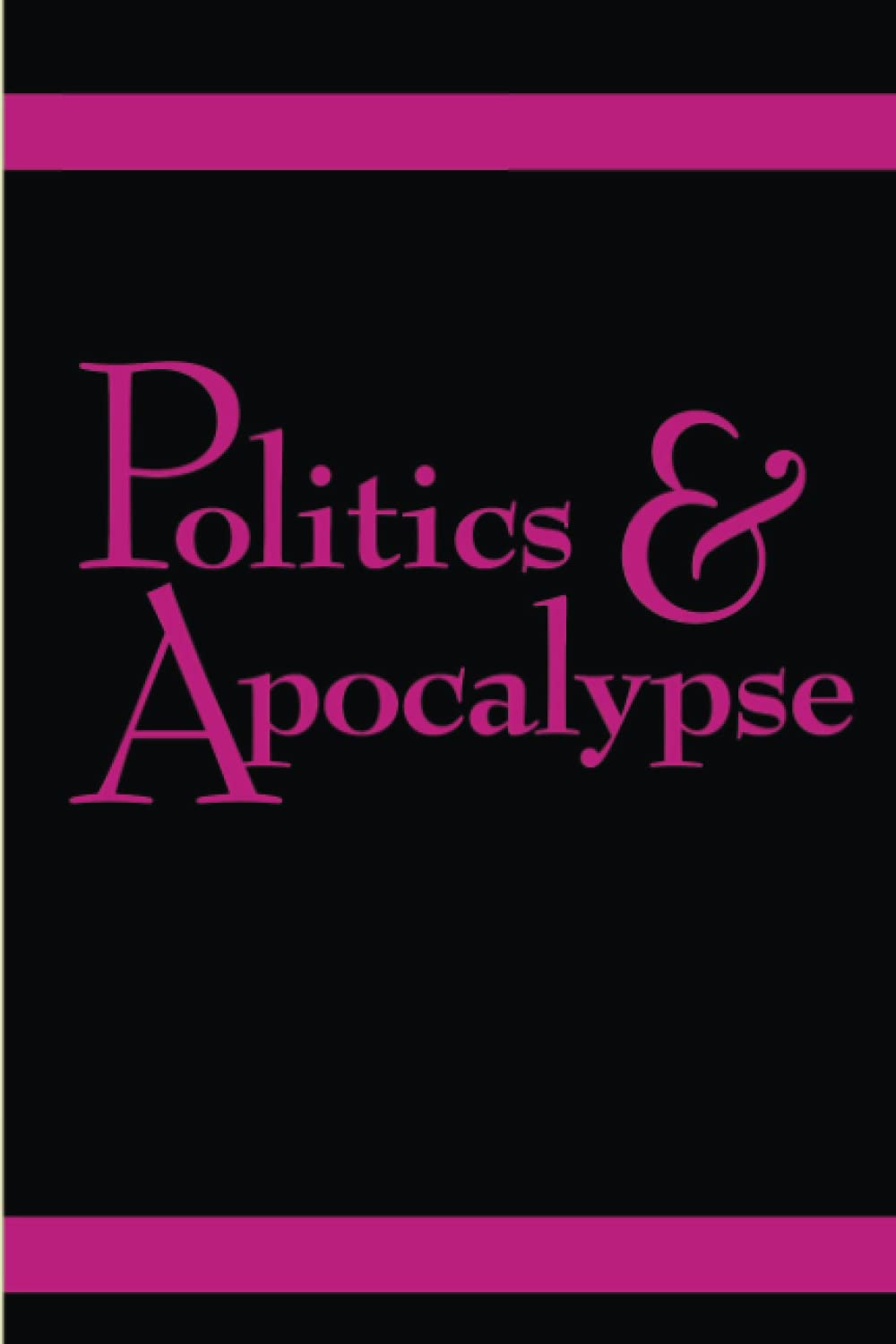This newsletter’s previous issue on the violent and white-supremacist hellscape that is the metaverse ended with a gentle cliffhanger. What’s brought us to a place where all-encompassing efforts to digitize everything can be branded as promising inevitabilities, only to be hotbeds for vile behavior? What technologies and spiritual worldviews made such a history and future possible? I asked you, knowing my answer.
In a rush to keep Divine Innovation on a strict schedule (like a train or a pomodoro-observant intern), I forgot to add another rhetorical inquiry. What lets the boosters of initiatives like the metaverse brush off critiques of their agendas through literally holier-than-thou rhetoric?
To recap the closing sentences of issue [33.0], technology and religion are cognates insofar as they—and their respective lexicons—can describe almost everything and nothing, sometimes swallowing each other whole. Technology’s standard definition as “the practical application of knowledge” stretches and blankets. Scholar of communication Jeremy Stolow, whom I mentioned in the third issue of this newsletter, considers religion a technology tout court. He points to religion as a mere husk if devoid of its technological essence:
Imagine any form of religious experience, practice, or knowledge and see what you have left “without technology.” No instruments, tools, or devices; no architecture or clothing; no paint, musical instruments, incense, or written documents; not even the disciplined practices of bodily control—such as learned and performed methods of breathing, sitting, or gesturing with one’s hands—for those too are technical practices. Even thoughts and images seem to vanish with the removal of the representational technologies of language and iconography. The inescapable conclusion to be drawn from this exercise is that “religion,” however we choose to define it, is inherently and necessarily technological.
Religion—as a system of beliefs and practices buttressing faith toward an “ultimate concern”—can turn right back and envelop the technological world. To hammer home my critique for the umpteenth time, facile critiques of the tech world as “cultish,” in which the “high priests” of the tech world “brainwash” their employees to nefarious ends. The interdisciplinarity of Silicon Valley has also been appreciated by scholars of tech philosophy like Adrian Daub as a form of “syncretism,” meaning a hybrid of a dominating religion with local religious traditions. Daub continues:
It’s not fair to compare religious faith to the glib stock the very smart people in the Valley seem to put in very dumb ideas. But more than most industries, tech companies seem to run on tropes and rituals that remind you of a tent revival: the mantra-like phrases, the messianic gurus, the cult of genius that barely manages to cover up its religious dimensions.
But, even if it’s “not fair” to compare tech ideologies to religions—an assertion standing on somewhat shaky foundations: the fallacy of religion hinging upon “authenticity”—a historic approach would suggest that “religious faith” and the Valley’s “glib stock” are born of the same historical mustard seed. Taking the long view on “tech” reveals a decidedly Christian supremacist history between the “Big Tech” of various periods and associated theopolitical imperatives, forming the beliefs that let terrifying techno-utopian projects flourish despite popular resistance to their development.
To prove my point, let’s dive into one substrain of tech ethics as advocated and exemplified by founder of PayPal and Palantir and hyperconservative Silicon Valley “thought leader” Peter Thiel and his institutions. They follow a mixed theology of the Apostle Paul and philosopher René Girard; this ethic—which I’ll describe with more texture below—glorifies esotericism in the name of salvation, monetization, and control. It justifies crossing its own ethical boundaries by approaching all people as lost so that they can be found. This ethic matters because it tells us what we can expect in current and future crises when tech companies navigate the turbulent seas of public opinion and politics. How do tech companies retain their eschatology—and peddle it?
In tech’s own telling, it’s emerged from the void, from its own sheer genius. The archetypal lone prodigy tech founder created something from nothing but elbow grease, “innovation,” and a humble garage. A kind of autosupersessionism explains its prowess, not hundreds of years of the modern project—a history we’ve explored through railroads and dams, sugar and cakes, oil rigs and space rockets.
Yet both state-sponsored chronologies and tech’s own mythology gloss over 9/11 and a subsequent Christian supremacist telos as a—if not the—pivotal moment in Silicon Valley’s history. Where Google once confronted legislative resistance to its business model before 9/11, for example, having realized that mining user data promised a path to profitability, it now met ardent (and materially substantive) support. Writes Shoshana Zuboff in The Age of Surveillance Capitalism:
In this environment of trauma and anxiety, a “state of exception” was invoked to legitimate a new imperative: speed at any cost. As [surveillance scholar David] Lyon put it, “What 9/11 did was to produce socially negative consequences that hitherto were the stuff of repressive regimes and dystopian novels… The suspension of normal conditions is justified with reference to the ‘war on terrorism.’” Critical to our story is the fact that this state of exception favored Google’s growth and the successful elaboration of its surveillance-based logic of accumulation.
Google’s mission was to “organize and make accessible the world’s information,” and by late 2001 the intelligence community established “information dominance” in the public’s house, quickly institutionalizing it in hundreds of billions of dollars’ worth of state-sponsored global technology infrastructure, personnel, and practice. The contours of a new interdependency between public and private agents of information dominance began to emerge, one that is best understood through the lens of what the sociologist Max Weber once called an “elective affinity” born of a mutual magnetism that originates in shared meanings, interests, and reciprocities.
CIA Director Michael Hayden, Zuboff reports, later conceded that his agency “could be fairly charged with the militarization of the world wide web.” This effectively shapes the U.S. religious landscape in the Christian state’s image by casting Islam as a threat to U.S. national security, which justifies extinguishing its free expression. State support for tech has outlasted 9/11, paralleling how US military interventions abroad have stretched into decades. Google is not alone, with everyone from Amazon to Microsoft to Clearview AI approaching military institutions as a windfall and springboard for growth.
Tech’s apotheosizing abnegation—claiming to be disruptive while born of a clear lineage and statist utility—echoes Pauline dilemmas in this regard. The Apostle Paul, too, navigated the strategic borderlands of dis/continuity, hoping to appear both revolutionary so as to attract converts but also benign so as to avoid being shut down by the state. With that dilemma in mind, in Romans 11:17-24, Paul explains that gentiles could be “grafted” onto Israel as a “wild olive shoot” does onto a more domesticated, cultivated tree.
These rhyming concerns held in common by the Apostle Paul and the tech industry are no mere coincidence. Leading Silicon Valley figures, namely Peter Thiel, make sense of tech’s purpose and future by consulting Christian thought. Thiel has latched onto the theological work of theologian René Girard to justify his conservative, bluechip crusade. In an attempt to evangelize in a more Biblical than techy sense, Thiel and nine colleagues, after discussing “current affairs with René Girard in a leisurely way” at a six-day conference in 2004, assembled the tome Politics & Apocalypse as a testament to their hive mind. Robert Hamerton-Kelly, the volume’s editor, gestures to the group’s collective identification as modern-day Zadokites, bequeathed with the gifts of “pesher interpretation, and the knowledge of the heavenly secrets.”
Identifying with the esoteric, with quietism, Hamerton-Kelly elaborates, is at once Pauline and Girardian:
The secrets were units of special knowledge of God’s plan for history, also called in the New Testament the “wisdom of God.” In 1 Corinthians 2:7–9, we see a good example of how Paul the Apostle uses this concept. He writes: “yet among the mature we do impart a wisdom, although it is not a wisdom of this age or of the rulers of this age, who are doomed to pass away. But we impart a secret and hidden wisdom of God, which God decreed before the ages of our glorification. None of the rulers of this age understood this; for if they had, they would not have crucified the Lord of Glory.” Girard makes much of this Pauline text as showing how the powers of this age destroyed themselves when they crucified Christ, because the Cross revealed their violence and showed this world to be a structure of the sacred violence. Had the powers known the secret wisdom, they would not have served God’s plan so well by disclosing their own surrogate victim ruse. In their ignorance they gave away the secret of their power, which is covert violence, and damaged themselves irreparably.
Thiel’s cabal is determined to avoid a similar fate. And, while Facebook, Google, and other giants have been household names now derided, Thiel’s power lies in covert violence that remains relatively hidden. Palantir is dubbed “Big Data’s scariest, most secretive unicorn,” its mission (let alone granular operations or algorithms) largely unknown to the public. Prophesies activist Marisa Franco, “Its contracts upholding immigration enforcement, racist policing and foreign wars portend a grim future of nationalism, militarism and thuggery, at home and abroad.” That it has contributed to a Moore’s law-esque acceleration of carceral projects (ICE raids, police surveillance, cyborgian military initiatives, and the like) remains less common knowledge than tech’s smarminess writ large—its existence and puissance remain something of a question mark to many.
To understand Thiel’s survival requires grappling with his religious ethic. To Thiel, 9/11 represented not just a windfall but also a civilizational fork in the road. In his contribution to Politics & Apocalypse, “The Straussian Moment,” Thiel writes:
The twenty-first century started with a bang on September 11, 2001. In those shocking hours, the entire political and military framework of the nineteenth and twentieth centuries, and indeed of the modern age, with its emphasis on deterrent armies, rational nation-states, public debates, and international diplomacy, was called into question. For how could mere talking or even great force deter a handful of crazy, determined, and suicidal persons who seemingly operated outside of all the norms of the liberal West? And what is needed now to be done, given that technology had advanced to a point where a tiny number of people could inflict unprecedented levels of damage and death? … Overnight, the fundamentalist civil rights mania of the American Civil Liberties Union (ACLU), which spoke in the language of inviolable individual rights, was rendered an unviable anachronism.
Over the course of his manifesto, Thiel—a future donor to Donald J. Trump’s white Christian nationalist agenda—outlines Christianity’s place in US history and its Manifest Destiny. The screed features hot takes that smack differently in the wake of the January 6th Insurrection: “Over time, the country founded by Locke would do away with Christian religiosity even as it maintained many outward appearances of it… There would be no catastrophic war against religion of the sort one had in France or Russia, but there would be no counterrevolution either.” The realities of “Jihadism,” he argues, require the “West” to “awaken from that very long and profitable period of intellectual slumber and amnesia that is so misleadingly called the Enlightenment'' and to consider new interplays between the state and religion. He turns to philosopher Leo Strauss, who argues, according to Thiel, that “we should consider Echelon, the secret coordination of the world’s intelligence services, as the decisive path to a truly global pax Americana.” Yet, Thiel continues, Girard would consider “the Straussian moment of triumph… to be brief indeed,” as there is a need to stress “both the continuity and discontinuity of humanity with the rest of the natural order” through a dialectical religious anthropology. Ultimately, approaching apocalypse in its original etymological context as an “unveiling,” Thiel concludes:
In determining the correct mixture of violence and peace, the Christian statesman or stateswoman would be wise, in every close case, to side with peace. There is no formula to answer the critical question of what constitutes a “close case”; that must be decided in every specific instance. It may well be that the cumulative decisions made in all those close instances will determine the destiny of the postmodern world. For that world could differ from the modern world in a way that is much worse or much better—the limitless violence of runaway mimesis of the peace of the kingdom of God.
By “mimesis,” Thiel is referring to Girard’s mimetic theory, which, Daub explains in What Tech Calls Thinking, posits that we like what others like, meaning our desires are a “romantic lie.” Girard argued that the crucifixion of Christ was the first event to demonstrate the truth of this theory, since it showed that, if we treated salvation as an opportunity for knowledge and growth, then we could understand what we desired, comprehend the dangers therein, and then overcome those obstacles. “Thanks to mimetic theory, you always know better than the people around you;” Daub critiques, “and thanks to mimetic theory, you have a useful dispensation from the need to actually look at anything very closely.”
Mimesis, in this framework, is humanity’s source of fallenness. In other words, access to this esoteric truth means We can be saved, then turn around and monetize other people’s sinfulness. “Good works” spring from obscurity and a capacity for the knowing to save others in the way the knowing deem fit.
It’s that last qualifier that beatifies the breadth and depth of any technologized vision within this ethic. Tech’s esotericism is both defense and offense. On the one hand, esotericism and obscurity protect oneself from being sullied by the unknowing; on the other, it permits the knowing to continue to affect the flock according to their design. This double-edged phenomenon buttresses those subscribing to this ethic from critiques that challenge their worldview, which can simply be dismissed as the sighs of the unknowing. It’s a mutation of what scholar of religion Lauren Kerby deems the “Amazing Grace problem”: “anyone can be redeemed, anyone can be lost and then found.” In this silicon iteration, anyone is lost so that they can be found—and converted.
A question to raise is why approaching this strain of Silicon Valley ethics from a religiously informed lens matters. This ethic, which remains prominent through Thiel and his portfolio of successful (secretive) corporations and institutions, permits “insiders” to dismiss mounting public opinion as nothing more than the copy-pasting kinks of the misinformed. It hardens the resolve of Girardian leaders to seek the “peace of the kingdom of God,” as Thiel concludes, on behalf of others. It encourages us to broaden the scope: Accountability lies not only in tech actors but in the ideological machines and figures that legitimize and moralize their behavior. Silicon Valley is a sloppy metonym: The tech industry is wrapped up within a nebulous cloud of institutions transcending type and geography. This ethic may rear its head in the Valley; its replacement may be lying dormant in universities and seminaries the way Girardian theology once did.
Syncopating with these lurking new geneses are current attempts to charge “onwards and upwards” out of the wreckage left behind by the “Big Tech” of different eras. The metaverse, an escape from our earth that is increasingly on fire, is one way to continue peddling that civilizational vision, and one that, through constant oversight of virtual inhabitants, is incredibly useful to state surveillance initiatives. To fork humanity from personhood and charge us into userhood, bolstering state power in the process. As long as educational institutions (denominational and non-denominational alike) circulate the existing rhetoric of technological institutions to gain favor and power, too, then we’re relegated to a circular experience of time, wherein the death of one order doesn’t liberate us into another simulacrum of “disruption” or “democracy.”
Divine Innovation is a somewhat cheeky newsletter on spirituality and technology. Published once every three weeks, it’s written by Adam Willems and edited by Vanessa Rae Haughton. Find the full archive here.










